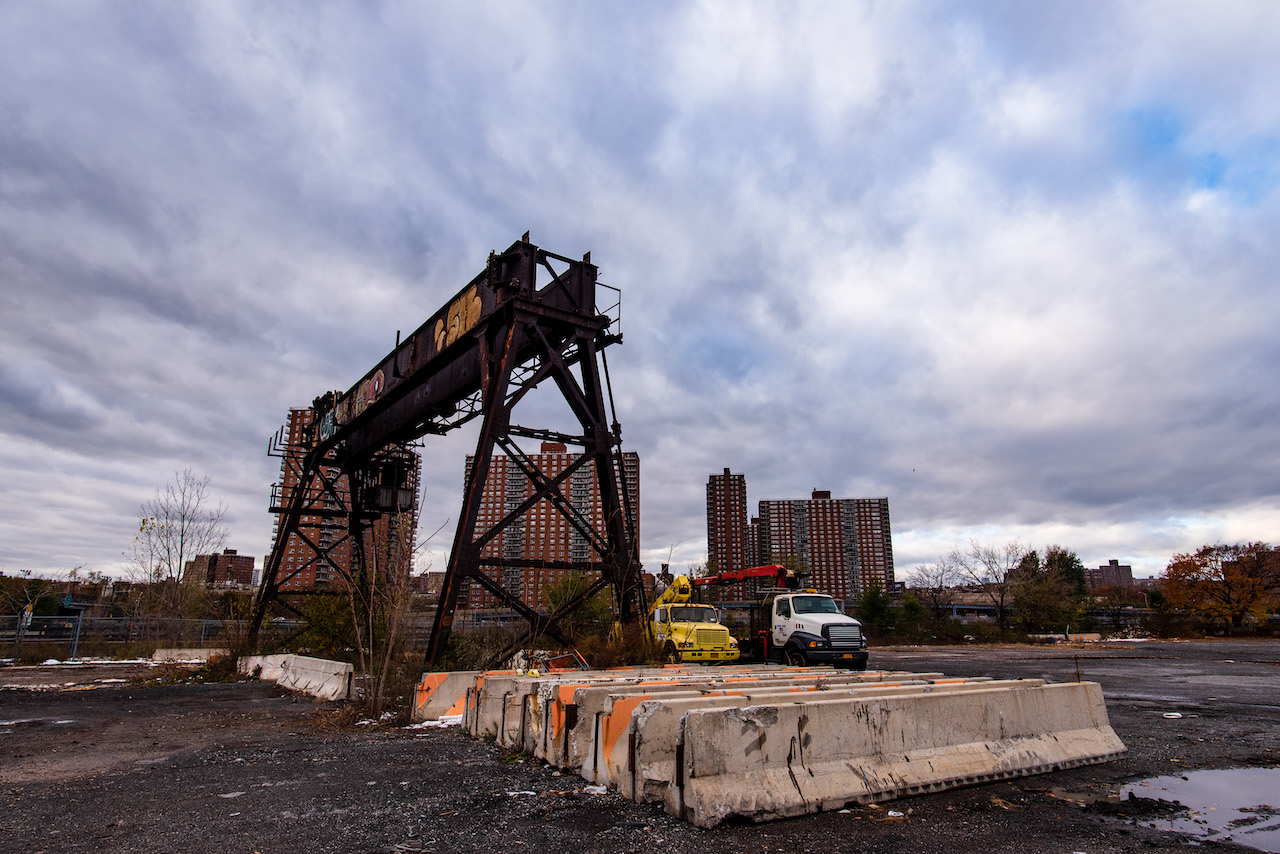A kiosk with a map in Mill Pond Park, located at the edge of the Harlem River and in front of the Bronx Terminal Market mall, shows an extension of the park that is yet to be built. The parcel of land in which the extension would be added is a contentious 5-acre parcel that has remained abandoned and deteriorating for the last decade.
Last year, the city pressed for the construction of a housing development in the space at the western edge of Melrose, known as Pier 5, north of E. 149th Street and just south of the park. Community Board 4 in the Highbridge section of the borough voted to approve, despite vocal opposition by environmental groups and residents who have pushed to preserve and expand local parkland instead.

“We fought for our park, but we couldn’t do it,” said Joyce Hogi, who lives on the Concourse and is a former president of the Bronx Council for Environmental Quality (BCEQ), a non-profit environmental organization.
In May, the BCEQ filed a lawsuit against the city, the NYC Economic Development Corporation (EDC), and the City Council, among others, in an effort to either keep the space as parkland or to get a similarly-sized lot in exchange that could be converted into parkland.
So far, they’ve gotten neither. Last July, a Supreme Court of the State of New York judge dismissed the case and decided in favor of the city and the developers, stating that the environmentalists did not provide the necessary burden of proof to show that Pier 5 is officially-designated parkland.
The environmentalists have since appealed and hope to expand their coalition of supporters. They maintain that the city promised the parcel to the community back in 2006, after it took 22.4 acres of parkland away to construct the new Yankee Stadium. Their major legal argument, according to Karen Argenti, a longtime environmentalist and a volunteer at BCEQ, is that the city, by ceding parkland to developers to build a housing project, is violating the “public trust doctrine.”
The doctrine is a law that has been in effect since the 1800s. It states that the people have the right to access waterfront property and that the government is the trustee of this right, a guarantor for generations to come; if parkland is designated for another purpose, it needs the State Legislature’s approval and a replacement of equal value.
Mill Pond Park and seven other small parks and recreation spaces were constructed as part of the parkland swap with the city in the Yankee Stadium deal. A Fiscal Brief from January 2009, by the city’s Independent Budget Office (IBO), shows the original 2005 estimated cost for replacing the parks was $116.1 million but “Since then, the cost of the original replacement parks has increased by 42 percent to $164.7 million, and the addition of new projects to the plan has lifted the cost by $30.0 million to $194.7 million.”
But in the process of replacing the lost parkland, the city ran out of funding and the 5-acre piece was left over. Mill Pond Park opened in 2009 while, right at the fence, Pier 5 has been eroding ever since, under the jurisdiction of the Parks Department.
“We’re not trying to stop them from developing, but if they want to take that place, they should replace it with [the] same. There is a Yankees parking lot (north of Mill Pond Park). There shouldn’t be a parking lot at the waterfront. It should be available to the public and it would be a just swap. Give that to the community as a park,” said Argenti.
The Bronx Borough President’s office did not respond to requests for comment. Similarly, the NYC EDC did not reply to requests for comments, nor did the Yankees media office.
Around the Hub, on a recent afternoon, residents were divided about what the community needs more, parks or housing.
Vicky Lopez, 61, a pediatric nurse, was buying coffee in front of Lincoln Hospital where she has worked for 29 years. A resident of Crotona Park, Lopez said she knows what the neighborhood needs. “The Bronx is growing. Let this be an extension of the park. The waterfront should have a boardwalk, like Atlantic City’s,” she said.
But for Marvin Green, 50, a resident of Morrisania, there’s no question. “People are living in the streets and in the trains. Housing is more important than a park now.”
Karla Moreira, 38, lives in Mott Haven and is a proponent of more physical activity for all. “Families don’t have many places to go with their children in the Bronx. It’s a priority in the summer. There’s no water park in the borough and perhaps a playground with exercise equipment would also be great,” she said in Spanish.

